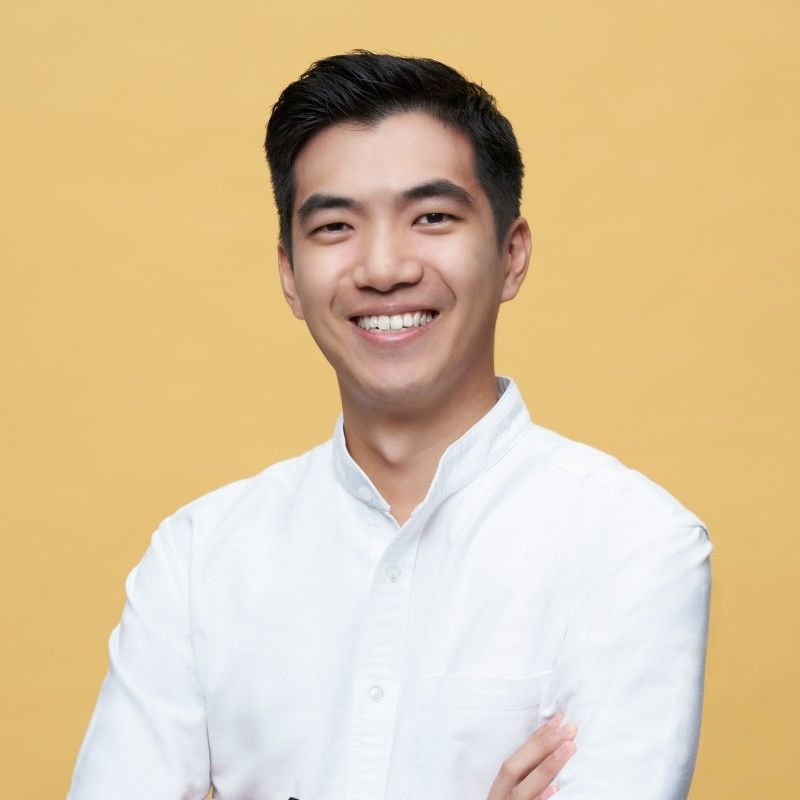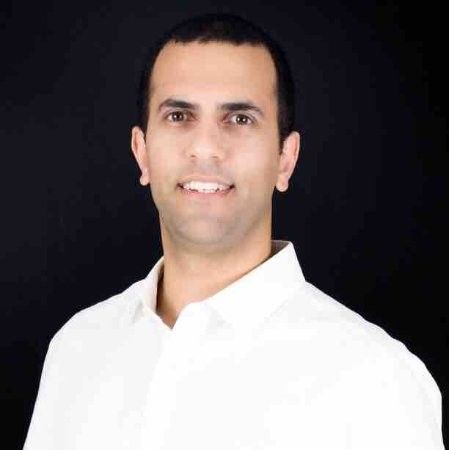The Comprehensive Guide to Building Your Own AI System: Tips, Tricks, and Best Practices

Within the last few years, we may observe constant evolution and enhancement of such groundbreaking technology as Artificial Intelligence. It has modified various industries and altered our daily lives. In the early days, AI was limited to rule-based systems that relied on predefined rules and logic. However, with the advent of ML and deep learning techniques, it became possible for AI systems to be guided by vast amounts of data while learning and making complicated decisions on their own. It has opened up new possibilities and revealed the genuine prospect of AI.

Referring to the AI surveys, some intriguing facts make businesses ponder AI deployment. For instance:
-
32.9% of enterprises apply AI for the replacement of some human duties;
-
4 out of 10 businesses plan to adopt AI;
-
The AI market is anticipated to reach $180 billion by 2025.
Despite the uncountable perks and market growth, some skeptical beliefs remain concerning this revolutionary technology. The fact that 63% define citation inaccuracy to be the leading pitfall of AI. Despite such pessimistic data that may slow down the implementation of artificial intelligence, there is still a great demand not only for the utilization of this technology as a helping tool but also for developing AI for the unique needs of their businesses.
This article provides an overview of AI development and explores its relevance in today's tech landscape. So, fasten your seatbelts and dive into this AI adventure together!
Everything You Need to Know About How to Build an AI
Artificial Intelligence emerged due to the development of computer systems that can execute tasks that naturally require human intellect. It's all about creating machines that can emulate the mental abilities of human beings, such as learning, reasoning, and making decisions on their own.
If you wonder, 'How to build my own AI?' Consider it a daunting task. The step-by-step guide presented down the line will help you clarify paramount issues and understand the basics.

Step 1: Define your objective
Start by determining the purpose and goal of your AI. Are you aiming to develop a chatbot, an advice system, or a self-driving car? With a clear objective, your product will be well-tailored to the users' needs and simplify picking the proper coding language or type of AI technology.
Step 2: Data Acquisition and Cleaning
The backbone of any successful AI system is high-quality data, so gather relevant and diverse datasets. It may be both structured and unstructured.
-
Structured data is organized information in a well-defined format, making it easy to search and analyze. It is commonly kept in databases or spreadsheets and follows a distinct schema.
-
Unstructured data is information without a clear structure and can be presented in various forms, such as text docs, video and audio files, images, and even social media posts. Humans often create unstructured data that is burdensome to accommodate into traditional databases.
The next step in your 'How to make an AI?' journey is cleaning and processing collected datasets for further training and testing your AI model, allowing it to make objective predictions or judgments. Clean and preprocess the data to ensure its integrity before moving forward.
Step 3: Choosing the Right Technology
When the data is collected, it is time to define the instruments you will operate when creating your AI system. Depending on the set goals, you must be zealous when deciding on the supporting and operating tools.
First, decide on the AI technology that will match your aims: ML, Deep learning, speech recognition, reinforcement learning, or anything else. Understand their strong and weak points to make an informed decision.
People who generate ideas for AI creation do not always know how to code AI, but they understand that it is impossible without using a programming language. It is also required to select a programming language. Java, Python, C++, Julia, and R are in demand for AI software creation.
-
Java is a versatile language known for its performance and scalability. As a rule, it is applied for making enterprise-level AI apps and frameworks.
-
Python is almost perfect for AI due to its unsophistication, readability, and vast libraries. It is excellent for ML, NLP, and data analysis tasks.
-
C++ is a multifunctional language that offers high output and low-level control. AI is commonly used for tasks requiring efficient memory management and computational speed.
-
R is a language specifically created for data analysis and statistical computing. It is widely used in AI for tasks like data visualization, ML, and statistical modeling.
-
Julia is quite a new language that focuses on high-performance numerical computing. It has grown in popularity in the AI community for its speed and ease of use.
These are just a few examples, and the option of programming language is influenced by the specific needs of your AI project and your personal preferences.
Step 4: Algorithm Development and Training
The next thing to do is to make a model. It means algorithm development that presupposes designing efficient and effective algorithms – the step-by-step guidelines that navigate the AI system's behavior. It involves carefully analyzing the problem at hand, understanding the available data, and formulating a strategy to gain meaningful understanding. The algorithm should be competent in handling diverse scenarios and supplying valid solutions within practical timeframes.
Once the algorithm is defined, the training phase begins. Training an AI model involves providing considerable amounts of labeled data to help it learn patterns, recognize correlations, and make predictions. This data serves as the fuel for the model's learning process.

Step 5: Testing and Refinement
When there is a skeleton of your AI-to-be, it is necessary to make a test drive that will reveal drawbacks and imperfections, if any. After training, you must thoroughly test your AI model to assess its performance. Use a separate dataset, the testing set, to evaluate how well your AI system generalizes to new data. Measure various metrics, such as accuracy, recall, exactness, or F1 score, to gauge its effectiveness. In case of flaws or ineffectiveness detection, it is necessary to engage specialists to eliminate all the shortcomings.
Step 6: Deployment and Monitoring
Once satisfied with your AI model's performance, it's time to deploy it into the real world. Integrate your AI system into the proper infrastructure, assuring it seamless interaction with other systems or interfaces. Constantly supervise its performance and make necessary amendments to maintain accuracy and efficiency.
It is clear how to create an AI, but it is necessary to understand that it is unlikely to reach a goal without precise and coherent actions.
A combination of clear objectives, quality data, fitting algorithms, extensive testing, and continuous refinement can assist in creating AI systems that tackle convoluted problems and fundamentally change our world.
Challenges in AI Development: Common Challenges and Tips to Overcome Them
AI development has undeniably opened up countless possibilities and modified various industries. However, it is essential to recognize that the field comes with its own set of challenges. When realizing how to create AI, we should encounter obstacles requiring constant attention and innovative solutions. Here are some key challenges faced in AI development:
-
Data quality and accessibility. AI algorithms count heavily on vast data to learn and generate insights. However, obtaining high-quality and various data can be problematic. Ensuring data accuracy, relevance, and accessibility remains challenging, especially in domains with limited data availability or when dealing with sensitive information.
-
Ethical considerations. With the increased reliance on AI systems, ethical concerns arise. Privacy, bias, fairness, and transparency issues must be addressed during AI development. AI should not perpetuate inequalities or discriminate against specific individuals or groups.
-
Lack of interpretability. Alongside explainability, interpretability refers to the ability to understand and interpret how AI models arrive at specific conclusions. Interpretable AI is significant in domains like healthcare or law, where decisions have life-altering consequences. Striking a balance between performance and interpretability is an active area of research.
-
Continuous learning and adaptability. AI models should be able to continually learn and adapt to changing circumstances or evolving data inputs. Designing algorithms that can adapt, generalize, and transfer knowledge to new scenarios without forgetting their prior knowledge remains challenging for developers.
-
Security risks. As AI systems become more adjacent to critical infrastructures and applications, they become potential targets for malicious attacks. Safeguarding AI systems against malicious attacks and deploying robust defenses are essential to avoid exploitation and potential harm.
Addressing these challenges requires collaborative efforts from researchers, developers, policymakers, and ethicists. As AI advances, we must tackle these challenges head-on, ensuring the responsible and beneficial expansion and implementation of AI technologies in our society.
Future Trends in AI: Speculating on Future Developments in AI Technology and Potential New Use Cases
Several decades ago, self-driving cars or receiving grounded answers and assistance from computers or smartphones seemed like crazy and unreal ideas. But today, we use chatbots daily and know that companies like Waymo and Tesla use AI technologies to develop self-sufficient vehicles capable of navigating and reacting to real-world situations.
Another bright sample of AI in the health tech industry is the IDx-DR health conditions detecting system that can diagnose diabetic retinopathy by retina analysis. And, of course, we can not imagine our lives without voice helpers like Amazon's Alexa, Apple's Siri, and Google Assistant, which utilize AI to interpret and respond to voice commands, allowing users to access information, manage smart home gadgets, manage schedules, and perform tasks hands-free.
Since there is always a place for improvement and development, Artificial intelligence does not stand still, and due to the demands of a constantly changing world, new and extraordinary ideas come into play.
AI has promising applications for more precise diagnostics, customized treatment options, drug discovery, and medical research. Quite actual is AI implementation in creating intelligent urban systems, including transportation, energy management, waste management, and infrastructure optimization. Additionally, NLP advancements can enhance language understanding and interact with machines.
In today's reality, creating AI-driven technologies is not a problem. The question of how to make AI all-purpose and flawless keeps worrying those who nurture revolutionary ideas. In Yojji, we know distinct answers to these questions and have an expert pool to realize your intentions.

Final Thoughts
How do I build my own AI? When striving to avoid coming to a standstill with your innovative AI-driven idea that may benefit users, it is essential to consider all the development stages and avoid fuss about AI model training, experimentation, and adaptations. A well-balanced approach with a sober evaluation of goals, available techniques, and teams may lead to optimal outcomes. Perhaps next time, your idea will serve as a breath-taking sample of an AI system!

Yojji successfully delivered the project within schedule. They demonstrated excellent project management via weekly sprint demos and promptly made adjustments based on the client's feedback. Their responsiveness and collaborative attitude were key elements of their work.

5.0
Yojji was an instrumental part of the client’s team, working closely with them to achieve the product’s success. The team was very collaborative and timely, and their performance was amazing. Additionally, their resources were experienced, professional, and enjoyable to work with.

5.0
Yojii is impressive both in quality of development work as well as their commitment. Strong focus on delivery, highly technical personnel, flexible approach that allows for rapid development. Strong processes that allow for solid controls.

5.0
We’re very happy with the way that Yojji works, which is why we’ve spent so much money and engaged them for such a long time. We treat them as employees in regard to responsibilities and expectations, and they haven’t disappointed us.

5.0
As a company, we find Yojji to be excellent development partners - we cannot recommend them more highly and will be very happy to continue working with them in the future.

5.0
They are really nice people with excellent technical backgrounds.

5.0
We used Agile project management methodology and were in contact with the team and project manager daily.

5.0
They all had a super positive outlook and were dedicated to getting the work completed to a high standard.

5.0
Yojji has delivered an accessible product with thorough consideration for the client's requirements. Users have commented on the platform's user-friendliness and speed. Moreover, the team is easy to communicate with and provides frequent updates. Their development and design skills are impressive.

5.0





